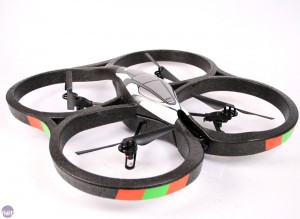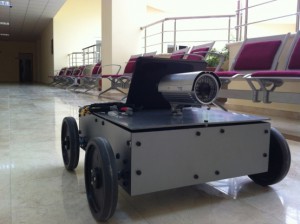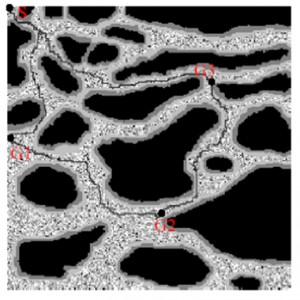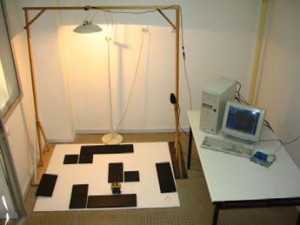An intelligent approach to common problems of visual servoing in a single IBVS system
While visually guided robots are becoming more popular, visual servoing (VS) has to deal with three common problems: obtaining and using the interaction matrix for defined feature points, finding an appropriate gain value for the controller and keeping the features in the field of view (FOV) for VS permanency. Although the interaction matrix is defined for point features, bad camera calibration and feature noise may affect this matrix and the pseudoinverse of this matrix may not be available. An appropriate gain value should be assigned to obtain fast convergence but high gains will cause high velocities and initial velocity signal continuity should be taken into consideration. The features should not leave the restricted FOV in order not to cause wrongly guided VS.
In this study, a new intelligent image-based visual servoing (IBVS) system for eye-in-hand configured robot manipulators using soft computing units is proposed to solve these problems of VS in a single system. As the first stage of the system, the interaction matrix is replaced with a trained extreme learning machine (ELM) to get rid of camera calibration and pseudoinverse operator. As the second stage, the classical IBVS controller is modified by a differential equation including initial velocity values and an appropriate gain in each loop is assigned by a fuzzy logic (FL) unit to provide fast convergence in velocity limits. In the third stage, regions are defined in the image plane and when a feature come close to the edge of a restricted region, another FL unit is activated to obtain negative linear velocities in x and y direction which will be added to the velocities to drag the features towards the center of the FOV. In addition to these abilities, some VS metrics are redefined in this study to fill the gap of performance metric definitions of VS implementation. To show the performance of the proposed system, the simulation results of classical and the proposed IBVS system under practical disturbances are presented for a Puma 560 arm and these systems are compared according to defined VS metrics.
Shape based autopilot landing system for a quadrotor

Introduction to this project will be avaiable soon. Click for a short video of the system. Project 2
Shape based leader following for a mobile robot with night vision ability
To make mobile robots more attainable, cost and specification problems should be solved. One of the specification problems that a full scale mobile robot has to deal with is night vision. In this study, BLMρ-a mobile robot with low cost and night vision ability is introduced. BLMρ is equipped with an IR-LED camera and it uses the reflection of IR-LED light to see its surrounding.
In addition to these specifications, especially for military applications, a mobile robot should detect and track its owner or leader. In this study, while the leader is carrying a shape, human tracking ability is achieved using regional descriptors, 2D cross-correlation and shape context. A more efficient algorithm is realized with Kalman filtering that reduces computational load. BLMρ is controlled by visual feedback and fuzzy logic controllers.
sample_video.avi
Short-Term Load Forecasting Without Weather Data
Load forecasting is essential for electric power generation and distribution, improvement of system operating conditions, effective system control and energy pricing. Short-term load forecasting is essentially used to meet economic operation conditions. The purpose of this study is to forecast Turkey’s 24-hour-ahead load demand using load data without temperature data. ANN, Wavelet Transform&ANN, and Wavelet Transform&RBF were used for forecasting process. Local holiday days’ load data was changed into normal day’s characteristic to remove the disturbing effect of those days. To have more accurate forecast, a regulation to load forecast is proposed. Unregulated and regulated forecast error percentages of all days except local holidays have been calculated as average daily MAPE and maximum MAPE. All MAPE values were compared between the structures used.
Model Based Fault Isolation and Fault Tolerant Control Of Robot Manipulators Using Artificial Intelligence Methods
While advanced control methods are becoming widespread, in addition to accuracy specifications, reliability and detection and isolation of possible faults and fault tolerance, if possible, have become an obligation for especially automatic control systems. In this study, for robot manipulators, three different model based fault detection-isolation schemes which are using artificial intelligence methods and which are formed of generation of difference signals between the real system and the model of the system and evaluation of these signals and a fault tolerant control scheme which is using gain scheduling method are proposed.
Implementation Of Path Planning Algorithms For Mobile Robots On a Grid Based Map
One of the most known problems for mobile robots on a grid based map is to find the shortest and the lowest cost path from one starting cell to one goal cell and one starting cell to multi-goal cells. In this study, three algorithms solving the shortest path problem on a grid based map are presented. In addition, the concept of path planning for multi-goal cells is explained and a comparison among the algorithms is performed according to the experimental results.



